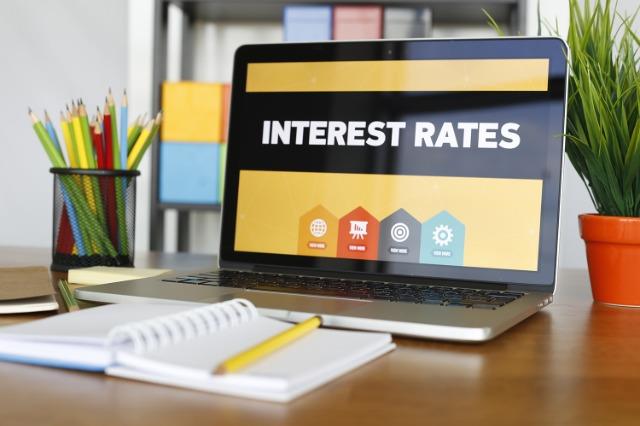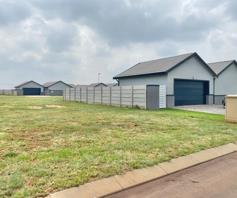With the interest rate rising for the third – and likely not final – time in a row last month in March, it’s no surprise that many South African homeowners are looking for creative ways to minimise the impact on their bond repayments.

The option to negotiate a fixed (rather than prime-linked) interest rate can be tempting in times like these. However, Roger Lotz, franchisee for Rawson Properties Helderberg, cautions homeowners to think carefully before taking this potentially costly route.
READ: SARB rate climbs even higher as inflation skyrockets
SEE: FLISP policy revised | 'No need for a home loan to obtain government subsidy'
Variable vs Fixed interest rate
Ooba offers a quick rundown of the pros and cons of each approach
Pro: If the prime interest rate goes down in response to market forces (as it just did with the three recent interest rate cuts by SARB), the interest on your home loan goes down with it, and you save money.
Con: On the other hand, if the prime interest rate goes up, so do your repayments. The fluctuating interest rates can make it difficult to budget accordingly.
Fixed interest rate
Pro: You keep paying the same home loan repayment amount monthly, regardless of fluctuations in the market, for an initial agreed period. You will thus be able to factor your repayments into your budget with 100% accuracy.
Con: A fixed interest rate may be less of a risk for you, but it’s more of a risk for the bank, so they’re likely to charge you a higher rate out the gate.
Con: Fixed interest rates expire after the initial agreed period, after which you will either have to revert to variable interest rates, or negotiate a new fixed rate with the bank.
Con: The option of a fixed interest rate for the initial agreed period is only offered after bond registration, so you cannot factor this into your planning upfront.
With this in mind, Lotz says fixing interest rates now is unlikely to have the cost-saving effect homeowners are hoping for.
“Fixed interest rates are always higher than prime-linked,” he explains. “That difference isn’t negligible, either – it’s often around 2%. Given that the prime lending rate is highly unlikely to escalate more than 2% over the next two years, all you’d achieve by fixing your bond rate now is to bring those increased expenses forward and pay them for longer than necessary.”
Fixed interest rates can be beneficial in certain circumstances where reliability and predictability are more valuable than overall cost. When affordability is your ultimate goal, however, Lotz says fixed interest rates are rarely the answer.
Lotz says costs are indeed going to be climbing for homeowners over the next while. Rising oil, fuel and electricity prices are putting serious pressure on inflation, and costs of living are going to hit harder than usual. When it comes to the interest rate, however, he says panic is unnecessary, as future increases are unlikely to be as high or as fast as many fear.
“Increasing interest rates is the SARB’s primary method for containing rising inflation, but inflation isn’t the only economic ball they’re juggling right now,” says Lotz. “The pandemic left our economy in crisis and reigniting growth is of the utmost importance. Increasing interest rates too high, too fast, would be detrimental to that goal. A slow and steady rise to moderate – not extreme – levels is far more likely.”
SEE: Fixed vs variable home loan interest rate - what's best?
Want a clear picture of what you can and can't afford? Try Property24's list of affordability calculators and tools here
“Ultimately, your lender needs to make a certain amount of profit off your bond,” he says. “They’re not going to offer you a fixed rate without building in enough of a buffer to ride out any foreseeable interest rate increases. The only way you stand to win with a fixed bond is if you can predict the market more accurately than your lender. That’s not very likely given the inside insights and extraordinary expertise they have on their team.”
Instead of attempting to dodge future interest rate increases, Lotz suggests homeowners start planning now to make sure they can accommodate the predicted rise in costs.
“Current worst-case estimates suggest prime will reach 8.25% by the end of this year, 9.25% by the end of next year, and 10.25% by the end of 2024,” he says. “It’s a good idea to run those numbers through your online bond calculator to see exactly what they do to your repayments.”
If affordability is likely to become an issue, Lotz highly recommends approaching your lender earlier rather than later. Not to fix your interest rate, but rather to discuss the full range of alternative options available to you.
“It’s in your lender’s best interests to help you through any temporary financial challenges. That includes affordability issues caused by interest rate increases. When given enough warning, lenders are almost always willing to reach a mutually beneficial compromise that will enable you to keep servicing your bond – and keep your property – while you find your financial feet,” says Lotz.
Want all the latest property news and curated hot property listings sent directly to your inbox? Register for Property24’s Hot Properties, Lifestyle and Weekly Property Trends newsletters or follow us on Twitter, Instagram or Facebook.








